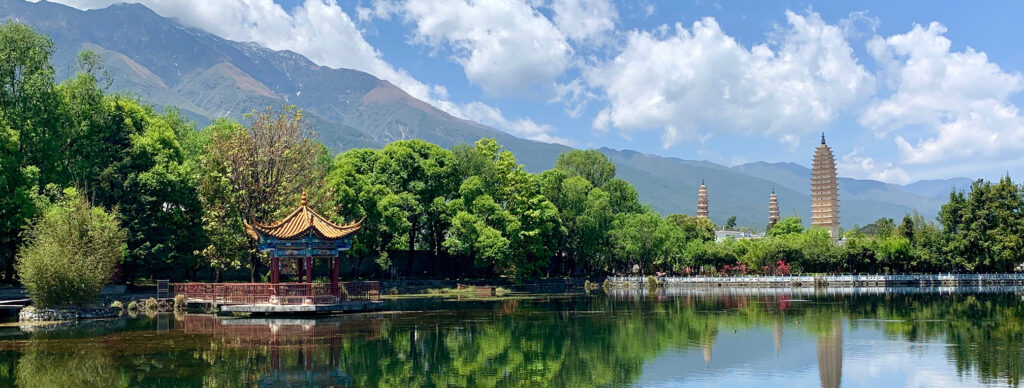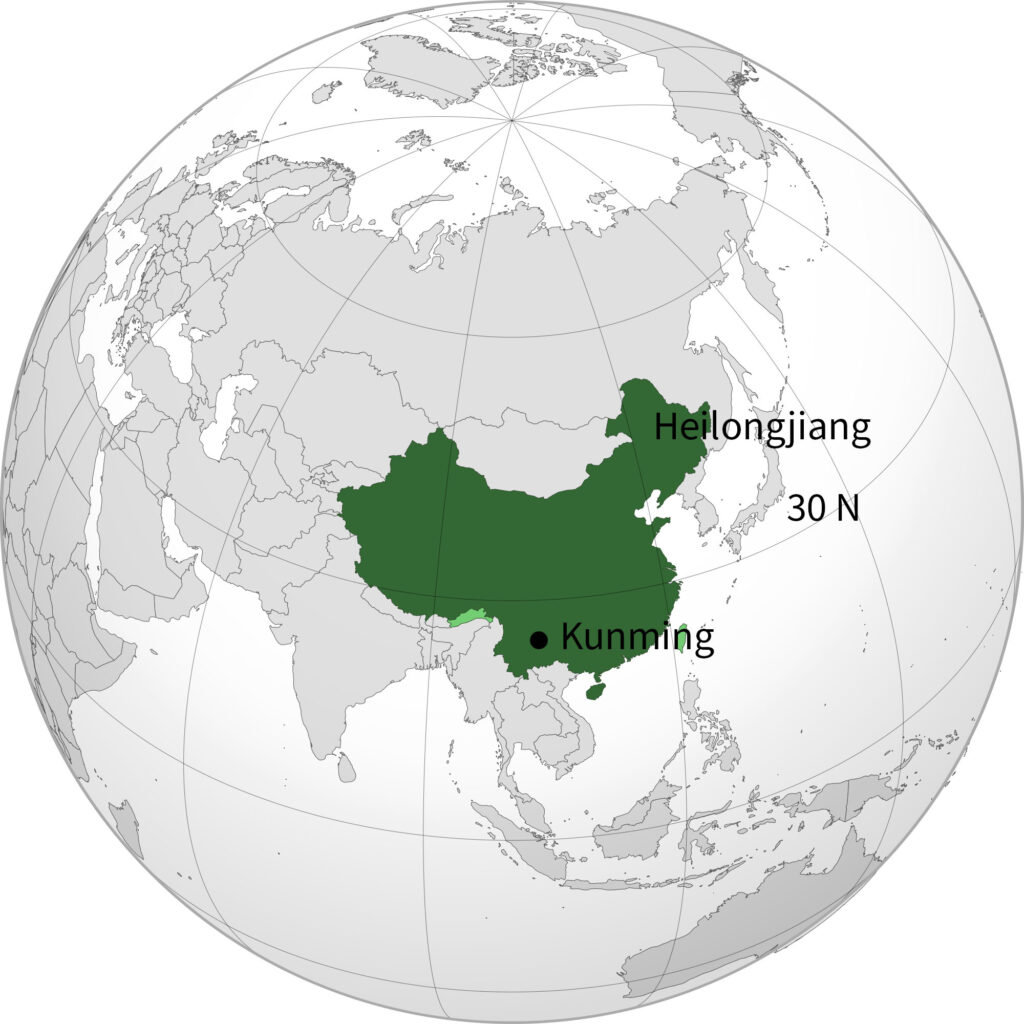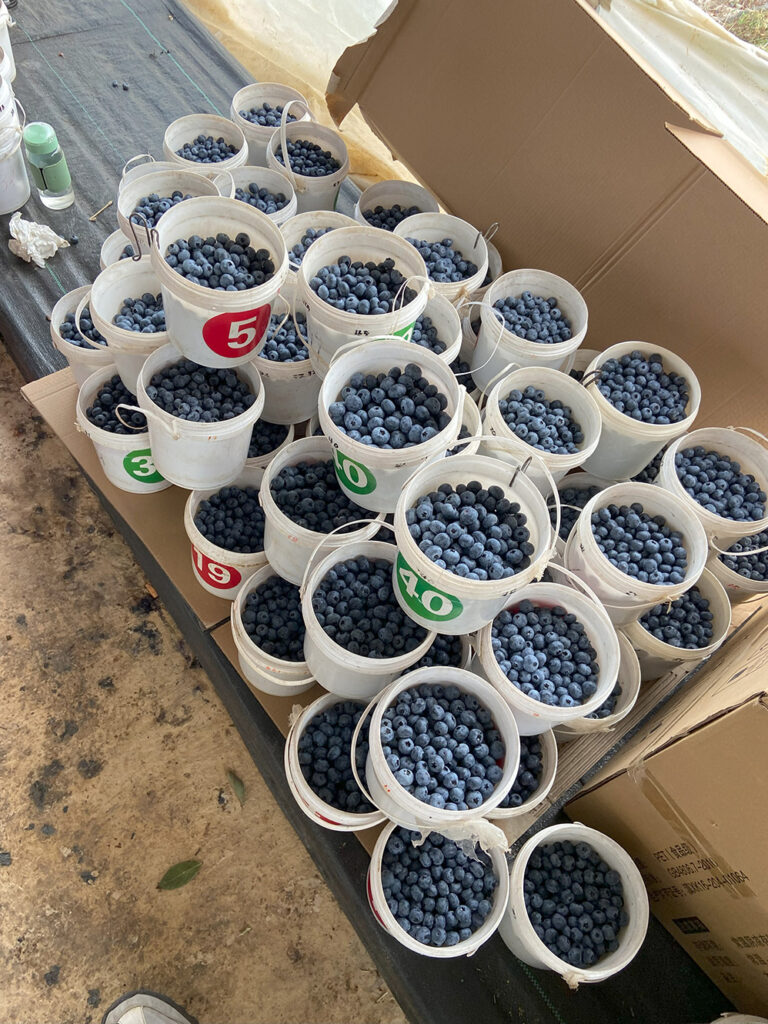Dear Reader,
Last month I had the pleasure of visiting Yunnan, China’s large south western province, with Dragons Garden’s MD Kirby Wang. Starting in Xishuangbanna we travelled to Menghai, Pu’er (famous for tea), Zhenyuan, Jingdong, Jianshui (famous for teapots) and Kaiyuan. The purpose of the trip was to visit our sources of cultivated blueberries in Yunnan. Previous trips to China have often included visits to fruit-growing areas; I have visited Jilin, Heilongjiang, Liaoning, Hebei, Jiangsu, Shaanxi, and Sichuan for one fruit or another. This, however, was my first visit to the tropical south west and it was an eye-opener. It is amazing how berry fruit plant breeding has enabled the production of crops in places that we would not have thought feasible 40 years ago.

Most traditional berry fruit varieties require some winter chilling for dormancy, so provinces like Heilongjiang (where the snow can be thigh deep in winter) were logical areas to develop these older varieties. Plant breeders have, however, also concentrated on varieties that do not need such a long winter sleep and so we find that Southern Highbush blueberries are flourishing at latitude 25 north on the Tropic of Cancer. Early breeding work was carried out in the USA, in the states of Georgia (latitude approx. 33 north) and Florida (latitude approx. 27 north), locations where the chilling hours are low. When successful cultivars were released they cropped at a time well before the northern maincrop came on and their fruits had the market to themselves and commanded great prices. Now we see some of the biggest western fresh fruit companies, together with big and small Chinese companies, all growing these blueberry varieties in Yunnan for the same reasons – favourable climate and favourable crop time in the market.
China’s rise in the world of blueberry production has been remarkable. It is now the world’s largest producer according to a report this year by USDA, with 69,036 hectares out of a global 253,400 global total. China is now also taking a lead in the breeding of this fruit with South China Agricultural University claiming the largest ever blueberry cultivar with fruits up to 4 cm. Furthermore it is not just blueberries that have taken off in Yunnan: the leading companies here have plantations of strawberry, raspberry, and blackberry.
During this trip we visited American, Australian and Peruvian joint ventures. Peru claims to now be the world’s largest exporter of fresh blueberries. We spoke to Peruvians visiting Yunnan at the same time who think the blueberry consumption potential in China is enormous. Consequently all of these groups have quite aggressive expansion plans. This Peruvian JV was near the town of Kaiyuan and part of a very large horticultural enterprise park growing all sorts of fruit and flowers. As an aside, Yunnan is particularly known for growing flowers and the flower market in Kunming is the biggest in China and well worth a visit.


These fresh fruit growers are all rather protective of their intellectual property and particularly their brand names in the market. The intellectual property may pertain to ‘plant breeders’ rights’ as some have developed their own varieties. The protection of brand name is seen in the extraordinary care taken with the quality of the fruit. For example one company was having their workers dry the flower end of the ripe fruit with cotton wool buds so that any moisture or exuded juice which can gather there is not affecting the beautiful appearance and keeping-quality of the product. I am not sure if this practice is carried out in other parts of the world but the diligence and fastidious nature of Chinese workers makes it possible in China. Many of the plantations are screened off from roadside viewers by windbreaks that fulfill privacy concerns. The growing practices were pretty much the same from one plantation to another – large growbags using composite substrate mixtures with fertigation and growing support systems – so I did wonder at the protective nervousness among the management.
In addition to the large areas under canopies with plants in growbags there are very much larger areas of outdoor growing in the soil by local growers. The performance of the blueberries under this more traditional and less expensive system seemed very good, with big plants and big fruit coming into production after the covered crop. In this short movie you can see almost the entire valley floor near Jingdong covered in blueberry plantations. This area was just one of many. You may also hear the distinct call of the Bugu bird which I understand to be a type of cuckoo.
Much of this province has a network of top-class motorways. They seem little used now but they have been built for the future. It is 2500 kilometres from Kunming to Qingdao but on these roads a truck with two drivers can cover the distance in about 36 hours.
We finished our visit at a couple of rose flower factories near Kunming. Aficionados of Turkish Delight may recognise the smell of roses in that Turkish delicacy. In China there are many applications for rose aroma and the petals themselves once infused. Our factory hosts presented some pastries with rose filling; very nice and unusual for those with a sweet tooth.
All the best,
David Berry
